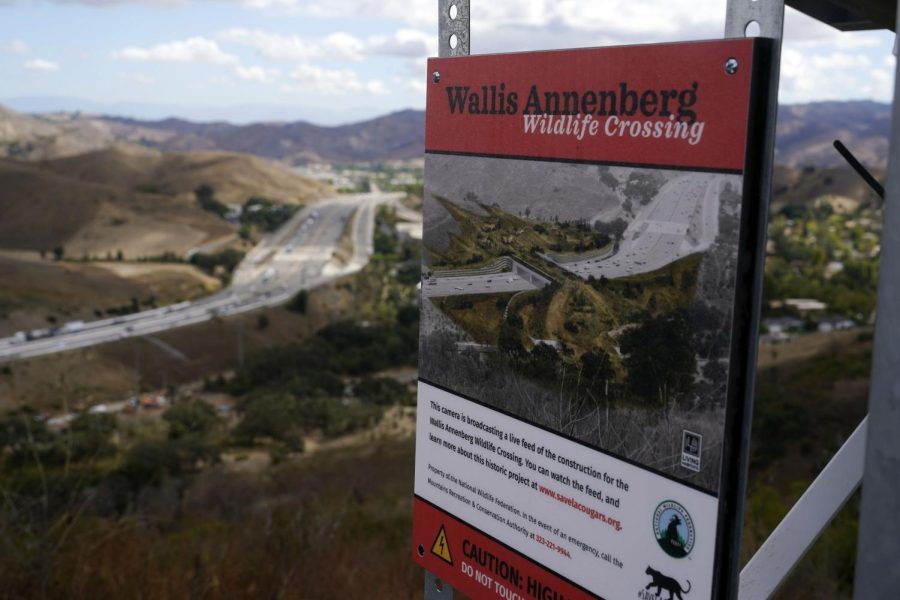The US needs to implement more wildlife crossings
An overview of the Wallis Annenberg Wildlife Crossing, which will eventually be built over the 101 Freeway, Tuesday, Sept. 20, 2022, in Agoura Hills, Calif. Construction has begun on what’s billed as the world’s largest wildlife crossing for mountain lions and other animals caught in Southern California’s urban sprawl.
November 9, 2022
Each year far too many animals are struck dead on America’s roads. It is long overdue that we directly address this issue and direct greater federal attention toward preventing wildlife-vehicle collisions.
According to State Farm’s annual report on animal collision insurance claims, 1.9 million collisions were reported between July 1, 2021 and June 30, 2022.
Just last month a mountain lion was struck and killed here in DeKalb County.
One solution to this heartbreaking problem is found with the construction of wildlife crossings, or infrastructure for animals.
Wildlife crossings are installations constructed to provide safe passage for wildlife over major highways and roads, decreasing collisions with vehicles while increasing wildlife access to natural resources and habitats. From huge, vegetated overpasses on which migrating deer or wandering bears can safely traverse, to secret tunnels burrowing below roads for the voyages of tiny frogs and lizards, wildlife crossings take many forms.
The idea first emerged in France in the 1950s but has been embraced across the world and proven its effectiveness since.
Canada’s Banff National Park currently boasts the largest amount of wildlife crossings in one location, with 44 separate crossings maintained to help animals safely navigate the Trans-Canada Highway that cuts through the park.
“… the structures (Banff National Park’s wildlife crossings) have reduced animal vehicle collisions in the area by more than 80% — and by more than 96% for elk and deer alone,” according to the Association of Professional Engineers and Geoscientists of Alberta.
Here in the United States, California is currently implementing what will become the world’s largest wildlife crossing yet: the Wallis Annenberg Wildlife Crossing. Expected to be completed by 2025, the Wallis Annenberg Crossing will aid the mobility of species such as mountain lions and protect the conservation of the region, which is recognized as one of 36 biodiversity hotspots remaining in the world.
The project is a huge development to celebrate, yet it must not be a rare occurrence. The United States must continue to install infrastructure like the Wallis Annenberg Wildlife Crossing, despite financial doubts.
While it is true the cost of wildlife crossings can be high, the United States pays for wildlife collision damages as well.
According to the same study by the U.S. Department of Transportation, about 200 Americans die each year due to vehicle collisions with large animals and the United States pays about $8 billion in damages each year. Wildlife crossings not only save the lives of humans and other species, but save money in doing so.
Thankfully, in November 2021, we saw Congress pass the Infrastructure Investment and Jobs Act, which includes a total of $350 million across the next five years toward the Wildlife Crossings Pilot Program. The program will provide grants specifically for the purpose of reducing wildlife collisions, such as through implementing wildlife crossings, and related research.
This is a fantastic step in the right direction and legislation dearly owed to our wildlife relatives. Original benefits aside, the need for wildlife crossings will only increase in the future. We must ensure, therefore, that we make these voyages as easy and as harmless as possible for both wildlife and humans.







